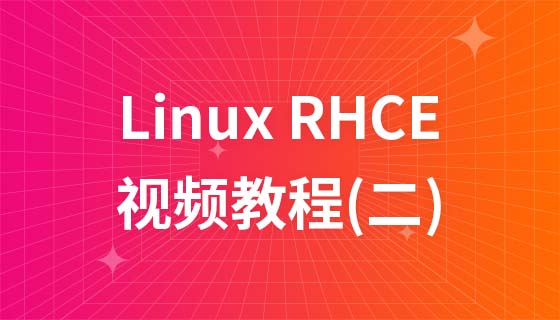
在现代应用开发中,数据一致性是核心关注点。传统关系型数据库通过外键(Foreign Key)约束来强制维护引用完整性,确保父子记录之间的关联性。然而,在某些特定场景下,例如使用不完全支持外键的数据库服务(如PlanetScale),或出于架构设计考虑需要将引用完整性逻辑提升到应用层处理时,我们就需要自行实现这一机制。
其中一个常见的挑战是:在删除一个父实体之前,如何高效地检查其是否仍有关联的子记录。如果直接加载所有子记录以判断列表是否为空(例如通过@OneToMany关联的List),当子记录数量庞大时,这会带来显著的性能开销,甚至可能导致内存溢出。我们的目标是,仅需判断“是否存在任何一个子记录”,而无需获取所有子记录的详细信息。
JPA提供了实体生命周期回调机制,允许我们在实体执行特定持久化操作(如创建、更新、删除)之前或之后介入。@EntityListeners注解用于指定一个或多个监听器类,而@PreRemove注解则标记一个方法,该方法会在实体从数据库中删除之前被调用。
实体监听器(Entity Listener)是一个独立的Java类,它不直接是实体本身。当我们将监听器定义为一个Spring的@Component时,Spring的依赖注入能力就能派上用场,允许我们在监听器中自动注入Spring管理的Bean,例如我们的Repository接口,从而能够执行数据库查询。
为了高效地检查子记录是否存在,Spring Data JPA提供了一系列便捷的查询方法。其中,findFirstBy...模式非常适合此场景。例如,findFirstByParentId()或findTopByParentId()方法,Spring Data JPA会将其翻译成带有LIMIT 1子句的SQL查询。这意味着数据库在找到第一个匹配的子记录后就会停止搜索并返回,极大地提高了查询效率,尤其是在子记录数量庞大时。
这种方法比执行COUNT(*)查询然后判断计数是否大于0更有效,因为COUNT(*)通常需要扫描所有匹配的行,而LIMIT 1则可以在找到第一行时立即返回。
下面我们将通过代码示例来演示如何在JPA应用层实现父实体删除前的子记录检查。
首先,定义父实体和子实体。注意,为了演示应用层检查,我们不需要在父实体中直接加载子实体列表,但会通过子实体关联到父实体。
import jakarta.persistence.*;
// 父实体
@Entity
@Table(name = "parent_entity")
// 关联实体监听器
@EntityListeners(ParentEntityListener.class)
public class ParentEntity {
@Id
@GeneratedValue(strategy = GenerationType.IDENTITY)
private Long id;
private String name;
// Getter and Setter
public Long getId() {
return id;
}
public void setId(Long id) {
this.id = id;
}
public String getName() {
return name;
}
public void setName(String name) {
this.name = name;
}
}import jakarta.persistence.*;
// 子实体
@Entity
@Table(name = "child_entity")
public class ChildEntity {
@Id
@GeneratedValue(strategy = GenerationType.IDENTITY)
private Long id;
private String description;
// 子实体通过外键关联父实体
@ManyToOne(fetch = FetchType.LAZY)
@JoinColumn(name = "parent_id")
private ParentEntity parent;
// Getter and Setter
public Long getId() {
return id;
}
public void setId(Long id) {
this.id = id;
}
public String getDescription() {
return description;
}
public void setDescription(String description) {
this.description = description;
}
public ParentEntity getParent() {
return parent;
}
public void setParent(ParentEntity parent) {
this.parent = parent;
}
}接下来,定义子实体的Repository接口,其中包含用于检查子记录是否存在的方法。
import org.springframework.data.jpa.repository.JpaRepository;
import org.springframework.stereotype.Repository;
@Repository
public interface ChildRepository extends JpaRepository<ChildEntity, Long> {
/**
* 查询是否存在与给定父ID关联的子记录。
* 使用 findFirstBy 确保只查询一条记录,提高效率。
*
* @param parentId 父实体的ID
* @return 如果存在子记录则返回第一个子实体,否则返回 null。
*/
ChildEntity findFirstByParentId(Long parentId);
}最后,创建ParentEntityListener类,并将其声明为Spring的@Component,以便能够注入ChildRepository。在@PreRemove方法中执行检查逻辑。
import org.springframework.beans.factory.annotation.Autowired;
import org.springframework.stereotype.Component;
import jakarta.persistence.PreRemove;
// 将监听器声明为Spring组件,以便能够进行依赖注入
@Component
public class ParentEntityListener {
// 自动注入ChildRepository
// 注意:在非Spring管理的JPA环境中,这里需要通过某种方式获取Repository实例
// 但在Spring Boot应用中,直接Autowired是推荐且便捷的方式
private static ChildRepository childRepository;
// Spring会在启动时调用此静态方法注入Repository
@Autowired
public void setChildRepository(ChildRepository childRepository) {
ParentEntityListener.childRepository = childRepository;
}
/**
* 在ParentEntity被删除之前调用此方法。
* 检查是否存在关联的子记录。
*
* @param parent 要删除的ParentEntity实例
* @throws ReferentialIntegrityException 如果存在子记录,则抛出此异常
*/
@PreRemove
public void preRemoveParent(ParentEntity parent) {
// 使用findFirstByParentId方法高效检查子记录是否存在
ChildEntity child = childRepository.findFirstByParentId(parent.getId());
if (child != null) {
// 如果存在子记录,则抛出自定义异常,阻止删除操作
throw new ReferentialIntegrityException(
"无法删除父实体 (ID: " + parent.getId() + "),因为它仍有关联的子记录。"
);
}
}
}为了使上述代码完整运行,我们还需要定义一个自定义异常类ReferentialIntegrityException:
// 自定义引用完整性异常
public class ReferentialIntegrityException extends RuntimeException {
public ReferentialIntegrityException(String message) {
super(message);
}
}通过巧妙地结合JPA的实体监听器和Spring Data JPA的findFirstBy查询方法,我们可以在应用层高效且优雅地实现引用完整性检查,避免在数据库不支持外键约束时出现数据不一致的问题。这种方法不仅保证了数据完整性,而且通过优化查询避免了不必要的性能开销,是构建健壮JPA应用的重要实践之一。它将业务逻辑与数据持久化操作紧密结合,提供了一个清晰、可维护且高效的解决方案。
以上就是JPA应用层引用完整性:高效检查子记录以安全删除父实体的详细内容,更多请关注php中文网其它相关文章!

每个人都需要一台速度更快、更稳定的 PC。随着时间的推移,垃圾文件、旧注册表数据和不必要的后台进程会占用资源并降低性能。幸运的是,许多工具可以让 Windows 保持平稳运行。




Copyright 2014-2025 https://www.php.cn/ All Rights Reserved | php.cn | 湘ICP备2023035733号